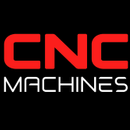Avionics Enclosures: Key Examples, Design Considerations, and CNC Manufacturing

Avionics Enclosures: Key Examples, Design Considerations, and CNC Manufacturing
Avionics enclosures serve as the protective shells for electronic systems managing critical flight operations, from navigation and communication to in-flight entertainment and engine monitoring. These housings withstand aviation's challenges, including vibration, temperature shifts, and pressure variations, and are crafted using high-strength materials and precision techniques like CNC machining. Below, we introduce five types of avionics enclosures and explain their construction and CNC manufacturing's integral role.
The Importance of Avionics Enclosures
Modern aircraft rely on digital systems for safe and efficient operations, requiring avionics to function reliably at high altitudes and in extreme conditions. A robust enclosure shields sensitive electronics from electromagnetic interference (EMI), harsh weather, fluid exposure, and mechanical stress while being lightweight to minimize fuel consumption and operational costs.
1. Flight Management System (FMS) Enclosures
Overview and Purpose
Flight Management Systems consolidate navigation, performance calculations, and flight planning. These enclosures protect computer boards and interface modules processing real-time data from various sensors.
Key Features
- Cooling Channels: Integration of ventilation passages or fans for heat management.
- Access Panels: Latching or removable panels facilitate quick software updates and troubleshooting.
CNC Manufacturing Process
- Aluminum Billet Milling: Enclosures are milled from lightweight aluminum alloys like 6061 or 7075.
- Precision Drilling: Multi-axis CNC machines ensure perfect placement for connectors and interface boards.
- Surface Treatments: Anodizing or chromate conversion coatings protect against corrosion and improve EMI shielding.
2. Communications and Radio Enclosures
Overview and Purpose
Aircraft rely on VHF, UHF, and satellite communication units housed in robust enclosures to transmit and receive critical messages to air traffic control and ground stations.
Key Features
- RF-Optimized Design: Grounding points and EMI gaskets reduce signal interference.
- Vibration Dampening: Shock mounts or grommets provide protection for delicate components.
CNC Manufacturing Process
- Prototype to Production: Early prototypes ensure radio-frequency performance before 4-axis or 5-axis CNC milling of final products.
- Connector Cutouts: Gaskets and couplings are machined to maintain airtight seals.
3. Engine Control Unit (ECU) Enclosures
Overview and Purpose
ECUs monitor and manage engine parameters. Their enclosures must withstand severe thermal cycling and exposure to various fluids.
Key Features
- Robust Sealing: Special O-ring grooves and surface finishes maintain hermetic seals.
- Thermal Dissipation: Designs incorporate heat sinks or strategic thicknesses for heat management.
CNC Manufacturing Process
- Titanium or High-Temp Aluminum: Enclosures are CNC-machined from high-strength materials.
- Tight Tolerances: Threaded holes ensure correct alignment and prevent cross-threading.
- Advanced Inspection: Non-destructive testing verifies structural integrity.
4. GPS and Navigation Unit Enclosures
Overview and Purpose
Protecting sensitive circuit boards and antennas, GPS and navigation units' housings must resist electromagnetic and environmental interference.
Key Features
- Low Reflective Surface: Finished to minimize radio wave reflection.
- Shielding Compartments: Internal compartments separate sensitive components from digital electronics.
CNC Manufacturing Process
- Selective Milling: Careful milling of inner partitions optimizes the weight.
- Sealing Passages: CNC routers create channels for gaskets to protect electronics from contamination.
- Electromagnetic Shielding: Surfaces coated with conductive materials boost EMI/RF protection.
5. In-Flight Entertainment (IFE) Enclosures
Overview and Purpose
IFE enclosures house media servers and hardware to offer entertainment and Wi-Fi access, needing to be lightweight, durable, and EMI-compliant.
Key Features
- Passenger-Facing Design: Includes user interface openings requiring polished finishes.
- Heat Management: Ventilated or fan-cooled sections handle heat from hardware.
CNC Manufacturing Process
- Aluminum or Composite Panels: Manufacturing integrates composite panels for rigidity and weight balance.
- Precision Routing: Openings for ports and brackets are routed to precise dimensions.
- Surface Coatings: Painting or powder coating matches interiors, sometimes adopting anodized appearances.
Why CNC Machining Is Essential for Avionics Enclosures
In aerospace, Computer Numerical Control (CNC) technology is foundational for enclosure fabrication:
- Exact Tolerances: Ensures flight-critical systems meet submillimeter precision.
- Complex Geometries: Multi-axis operations achieve intricate designs.
- Repeatability: Consistency across production runs eases inspection and assembly.
- Shorter Lead Times: Automation speeds prototyping and manufacturing.
Final Thoughts
Avionics enclosures must be rugged, lightweight, and meticulously crafted to protect sophisticated electronics that ensure modern aircraft safety and efficiency. Whether housing flight management systems or in-flight entertainment modules, these enclosures rely on CNC machining for precision and durability. As aerospace demands higher performance, CNC manufactured enclosures will remain essential in next-gen avionics design.


